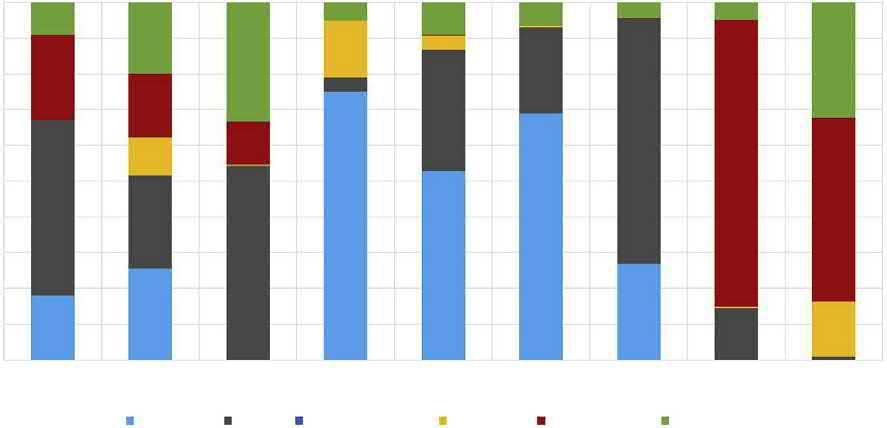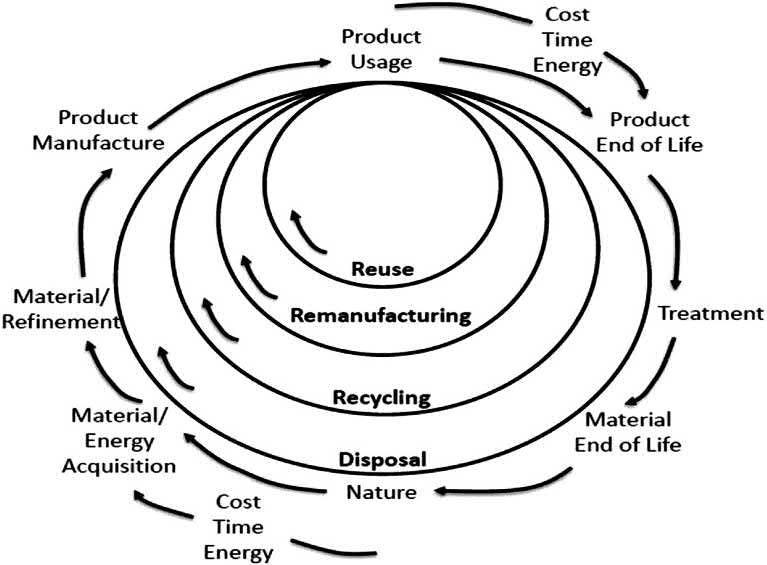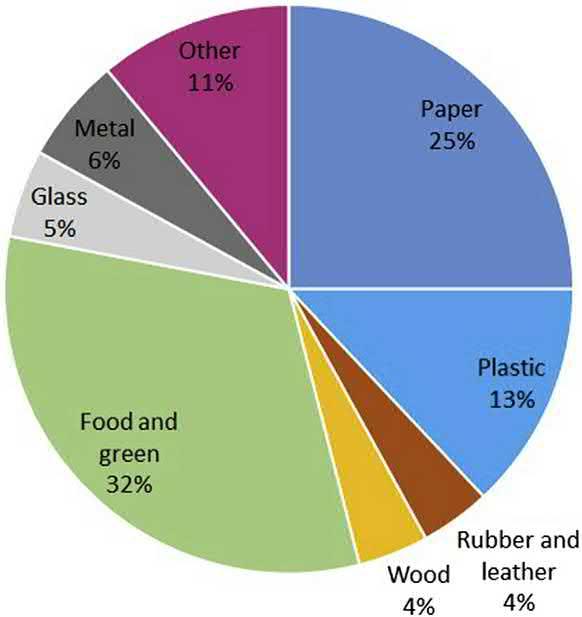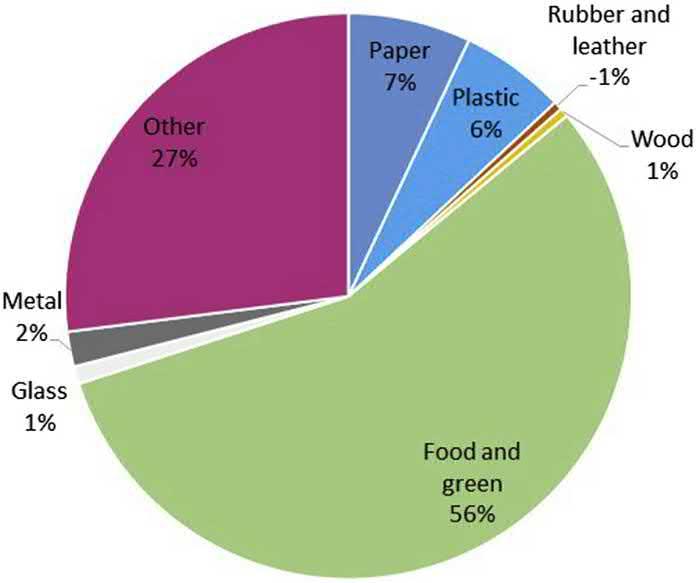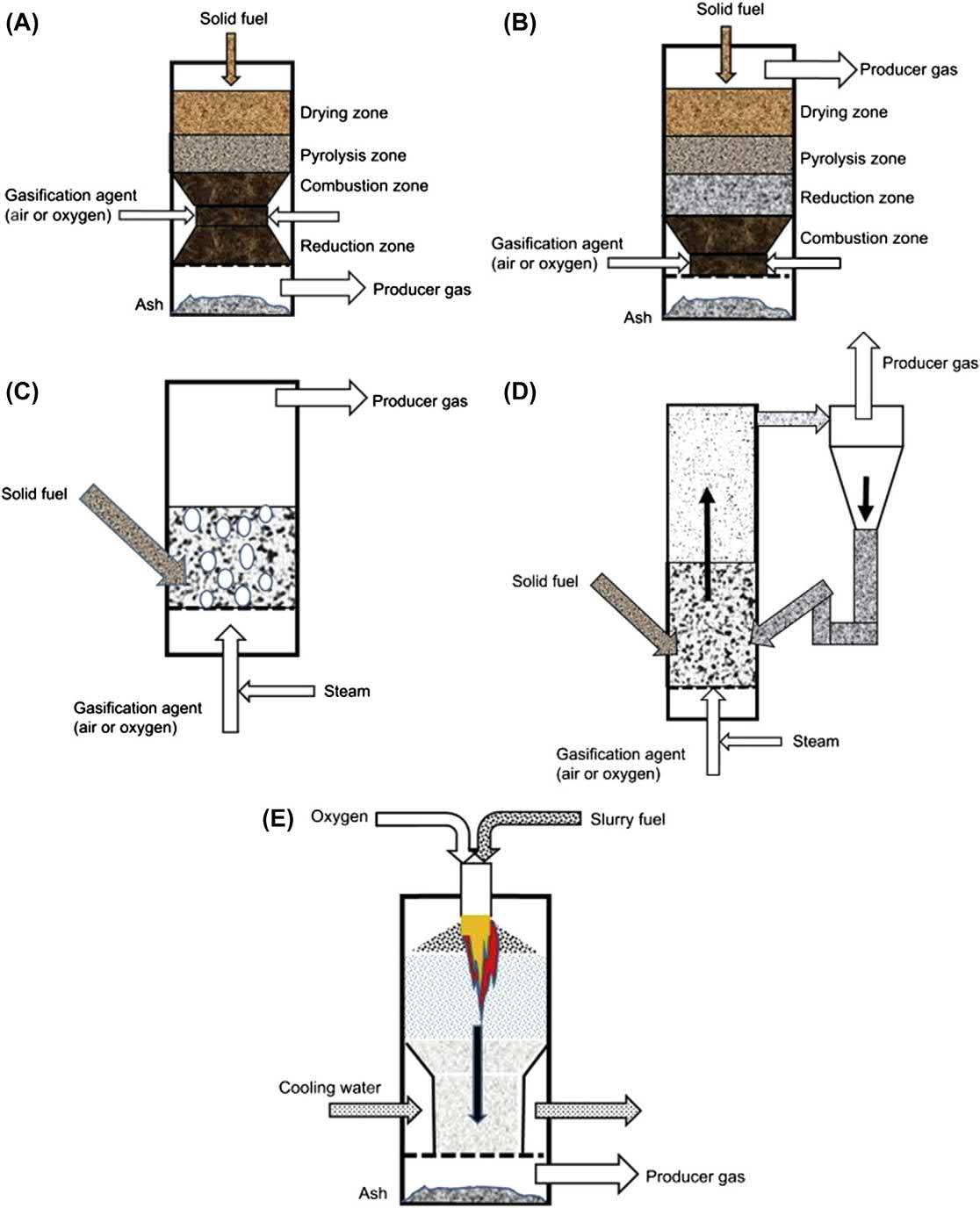
https://ebookmass.com/product/waste-biorefinery-integrating-

Instant digital products (PDF, ePub, MOBI) ready for you
Download now and discover formats that fit your needs...
Waste Valorisation: Waste Streams in a Circular Economy
Carol Sze Ki Lin
https://ebookmass.com/product/waste-valorisation-waste-streams-in-acircular-economy-carol-sze-ki-lin/
ebookmass.com
Advanced Materials from Recycled Waste Sarika Verma

https://ebookmass.com/product/advanced-materials-from-recycled-wastesarika-verma/
ebookmass.com
Zero Waste Cooking For Dummies 1st Edition Rosanne Rust

https://ebookmass.com/product/zero-waste-cooking-for-dummies-1stedition-rosanne-rust/
ebookmass.com
Unheard Voices: Women, Work and Political Economy of Global Production 1st ed. Edition Farah Naz
https://ebookmass.com/product/unheard-voices-women-work-and-politicaleconomy-of-global-production-1st-ed-edition-farah-naz/
ebookmass.com


Anti-Proverbs in Five Languages: Structural Features and Verbal Humor Devices Anna T. Litovkina
https://ebookmass.com/product/anti-proverbs-in-five-languagesstructural-features-and-verbal-humor-devices-anna-t-litovkina/
ebookmass.com
The Honorable Warrior: Navy SEAL Romance Krey

https://ebookmass.com/product/the-honorable-warrior-navy-seal-romancekrey/
ebookmass.com
Halloween is Coming! Cal Everett
https://ebookmass.com/product/halloween-is-coming-cal-everett/
ebookmass.com
Pharis' Pickle in Seagull Bay: A heartwarming & uplifting new coastal town series Hill
https://ebookmass.com/product/pharis-pickle-in-seagull-bay-aheartwarming-uplifting-new-coastal-town-series-hill/
ebookmass.com
Islands and the British Empire in the Age of Sail Douglas Hamilton (Editor)
https://ebookmass.com/product/islands-and-the-british-empire-in-theage-of-sail-douglas-hamilton-editor/
ebookmass.com




https://ebookmass.com/product/shrm-cp-shrm-scp-certification-all-inone-exam-guide-2nd-edition-beverly-dance/
ebookmass.com


Editedby ThalladaBhaskar BiomassConversionArea, MaterialResourceEfficiencyDivision,
CSIR-IndianInstituteofPetroleum,Dehradun,India
AshokPandey CentreforInnovationandTranslationalResearch,
CSIR-IndianInstituteofToxicologyResearch,Lucknow,India
EldonR.Rene
IHEDelftInstituteforWaterEducation,Delft,TheNetherlands
DanielC.W.Tsang DepartmentofCivilandEnvironmentalEngineering, TheHongKongPolytechnicUniversity,HongKong
Elsevier
Radarweg29,POBox211,1000AEAmsterdam,Netherlands
TheBoulevard,LangfordLane,Kidlington,OxfordOX51GB,UnitedKingdom 50HampshireStreet,5thFloor,Cambridge,MA02139,UnitedStates
Copyright © 2020ElsevierB.V.Allrightsreserved.
Nopartofthispublicationmaybereproducedortransmittedinanyformorbyanymeans,electronicor mechanical,includingphotocopying,recording,oranyinformationstorageandretrievalsystem,without permissioninwritingfromthepublisher.Detailsonhowtoseekpermission,furtherinformationaboutthe Publisher’spermissionspoliciesandourarrangementswithorganizationssuchastheCopyrightClearance CenterandtheCopyrightLicensingAgency,canbefoundatourwebsite: www.elsevier.com/permissions
ThisbookandtheindividualcontributionscontainedinitareprotectedundercopyrightbythePublisher (otherthanasmaybenotedherein).
Notices
Knowledgeandbestpracticeinthis fieldareconstantlychanging.Asnewresearchandexperiencebroaden ourunderstanding,changesinresearchmethods,professionalpractices,ormedicaltreatmentmaybecome necessary.
Practitionersandresearchersmustalwaysrelyontheirownexperienceandknowledgeinevaluatingandusing anyinformation,methods,compounds,orexperimentsdescribedherein.Inusingsuchinformationor methodstheyshouldbemindfuloftheirownsafetyandthesafetyofothers,includingpartiesforwhomthey haveaprofessionalresponsibility.
Tothefullestextentofthelaw,neitherthePublishernortheauthors,contributors,oreditors,assumeany liabilityforanyinjuryand/ordamagetopersonsorpropertyasamatterofproductsliability,negligenceor otherwise,orfromanyuseoroperationofanymethods,products,instructions,orideascontainedinthe materialherein.
LibraryofCongressCataloging-in-PublicationData
AcatalogrecordforthisbookisavailablefromtheLibraryofCongress
BritishLibraryCataloguing-in-PublicationData
AcataloguerecordforthisbookisavailablefromtheBritishLibrary
ISBN:978-0-12-818228-4
ForinformationonallElsevierpublicationsvisitourwebsiteat https://www.elsevier.com/books-and-journals
Publisher: SusanDennis
AcquisitionsEditor: KostasKIMarinakis
EditorialProjectManager: EmeraldLi
ProductionProjectManager: SelvarajRaviraj
CoverDesigner: MilesHitchen
TypesetbyTNQTechnologies
Contributors
RabiaAbad SchoolofAppliedSciences,TheUniversityofHuddersfield,Huddersfield,United Kingdom
AbdelrahimAbusafa ChemicalEngineeringDepartment,An-NajahNationalUniversity,Nablus, Palestine
MortazaAghbashlo DepartmentofMechanicalEngineeringofAgriculturalMachinery,Faculty ofAgriculturalEngineeringandTechnology,CollegeofAgricultureandNaturalResources, UniversityofTehran,Karaj,Alborz,Iran
AsamAhmed DivisionofSystems,Power&Energy,JamesWattSchoolofEngineering, UniversityofGlasgow,Glasgow,UnitedKingdom
MaherAl-Jabari RenewableEnergyandEnvironmentResearchUnit,MechanicalEngineering Department,PalestinePolytechnicUniversity,Hebron,Palestine
MariaAlexandri LeibnizInstituteforAgriculturalEngineeringandBioeconomyPotsdam, Potsdam,Germany
A.K.M.KaziAurnob DepartmentofChemicalEngineering,BangladeshUniversityofEngineeringandTechnology,Dhaka,Bangladesh
AyanBanerjee MaterialResourceEfficiencyDivision,CSIR-IndianInstituteofPetroleum, Dehradun,Uttarakhand,India;AcademyofScientificandInnovativeResearch(AcSIR),New Delhi,India
ShishirKumarBehera IndustrialEcologyResearchGroup,SchoolofChemicalEngineering, VelloreInstituteofTechnology,Vellore,TamilNadu,India
LaurentBelard NaturePlast,Ifs,France
StellaBezergianni ChemicalProcess&EnergyResourcesInstitute-CPERI,CentreforResearch &TechnologyHellasCERTH,Thessaloniki,Greece
ThalladaBhaskar MaterialResourceEfficiencyDivision,CSIR-IndianInstituteofPetroleum, Dehradun,Uttarakhand,India;AcademyofScientificandInnovativeResearch(AcSIR),New Delhi,India
NilutpalBhuyan DepartmentofEnergy,TezpurUniversity,Tezpur,Assam,India
HanifA.Choudhury DepartmentofChemicalEngineering,TexasA&MUniversityatQatar, Doha,Qatar
LoukiaP.Chrysikou ChemicalProcess&EnergyResourcesInstitute-CPERI,Centrefor Research&TechnologyHellasCERTH,Thessaloniki,Greece
CaterinaCollLozano ImecalS.A.,La ´ lcudia,Valencia,Spain
SutapaDas DepartmentofChemicalEngineering,IndianInstituteofTechnologyGuwahati, Guwahati,Assam,India
AntonioDavid-Moreno CIEMAT,Madrid,Spain
FrancescaDemichelis DIATI,PolitecnicodiTorino,Torino,Italy
ChenyuDu SchoolofAppliedSciences,TheUniversityofHuddersfield,Huddersfield,United Kingdom
CapucineDupont DepartmentofEnvironmentalEngineeringandWaterTechnology,IHEDelft InstituteforWaterEducation,Delft,TheNetherlands
AmerElhamouz ChemicalEngineeringDepartment,An-NajahNationalUniversity,Nablus, Palestine
SilviaFiore DIATI,PolitecnicodiTorino,Torino,Italy
Marı´aGarcı´aTorreiro AINIA-Centrotecnolo ´ gico,Paterna,Valencia,Spain
DebashishGhosh MaterialResourceEfficiencyDivision,CSIR-IndianInstituteofPetroleum, Dehradun,Uttarakhand,India;AcademyofScientificandInnovativeResearch(AcSIR),New Delhi,India
InmaculadaGonza ´ lezGranados BiomasaPeninsularS.A.,Madrid,Spain
VaibhavV.Goud DepartmentofChemicalEngineering,IndianInstituteofTechnologyGuwahati, Guwahati,Assam,India
JasneetGrewal EnzymeandMicrobialBiochemistryLaboratory,DepartmentofChemistry, IndianInstituteofTechnologyDelhi,HauzKhas,NewDelhi,India
NataliaHerreroGarcı ´ a BiomasaPeninsularS.A.,Madrid,Spain
HomaHosseinzadeh-Bandbafha DepartmentofMechanicalEngineeringofAgriculturalMachinery,FacultyofAgriculturalEngineeringandTechnology,CollegeofAgricultureandNaturalResources,UniversityofTehran,Karaj,Alborz,Iran
Shu-ChienHsu DepartmentofCivilandEnvironmentalEngineering,TheHongKongPolytechnicUniversity,Kowloon,HongKong,China
KaziBayzidKabir DepartmentofChemicalEngineering,BangladeshUniversityofEngineering andTechnology,Dhaka,Bangladesh
RupamKataki DepartmentofEnergy,TezpurUniversity,Tezpur,Assam,India
RavneetKaur Dr.B.R.AmbedkarNationalInstituteofTechnology,Jalandhar,Punjab, India;MaterialResourceEfficiencyDivision,CSIR-IndianInstituteofPetroleum,Dehradun,Uttarakhand,India
S.K.Khare EnzymeandMicrobialBiochemistryLaboratory,DepartmentofChemistry,Indian InstituteofTechnologyDelhi,HauzKhas,NewDelhi,India
KawnishKirtania DepartmentofChemicalEngineering,BangladeshUniversityofEngineering andTechnology,Dhaka,Bangladesh
Chor-ManLam DepartmentofCivilandEnvironmentalEngineering,TheHongKong PolytechnicUniversity,Kowloon,HongKong,China
MarcosLatorre-Sa ´ nchez ImecalS.A.,L’alcudia,Valencia,Spain
RaquelLebrero InstituteofSustainableProcesses,UniversityofValladolid,Valladolid, Spain;DepartmentofChemicalandEnvironmentalEngineering,UniversityofValladolid, Valladolid,Spain
YizeLi DivisionofSystems,Power&Energy,JamesWattSchoolofEngineering,Universityof Glasgow,Glasgow,UnitedKingdom
DiannanLu DepartmentofChemicalEngineering,TsinghuaUniversity,Beijing,China
MetteLu ¨ beck DepartmentofChemistryandBioscience-SectionforSustainableBiotechnology, Denmark
TiffanyM.W.Mak DepartmentofCivilandEnvironmentalEngineering,TheHongKong PolytechnicUniversity,Kowloon,HongKong,China
RiteshS.Malani CentreforEnergy,IndianInstituteofTechnology,Guwahati,Guwahati,Assam, India
N.ArulManikandan DepartmentofChemicalEngineering,IndianInstituteofTechnology Guwahati,Guwahati,Assam,India
VijayanandS.Moholkar CentreforEnergy,IndianInstituteofTechnology,Guwahati,Guwahati, Assam,India;DepartmentofChemicalEngineering,IndianInstituteofTechnology,Guwahati, Guwahati,Assam,India
HamidrezaMojab DepartmentofWaterResourceManagement,FacultyofCivilEngineeringand Geoscience,TechnicalUniversityofDelft,Delft,TheNetherlands
JoseL.MoltoMarin ExergyLtd.,Coventry,UnitedKingdom
SidraMunir SchoolofAppliedSciences,TheUniversityofHuddersfield,Huddersfield,United Kingdom
RaulMun ˜ oz InstituteofSustainableProcesses,UniversityofValladolid,Valladolid, Spain;DepartmentofChemicalandEnvironmentalEngineering,UniversityofValladolid, Valladolid,Spain
HanaMusinovic NATRUE,Brussels,Belgium
AhaduzzamanNahid DepartmentofChemicalEngineering,BangladeshUniversityofEngineeringandTechnology,Dhaka,Bangladesh
M.M.TejasNamboodiri DepartmentofBiosciencesandBioengineering,IndianInstituteTechnologyGuwahati,Guwahati,Assam,India
Abdul-SattarNizami CenterofExcellenceinEnvironmentalStudies(CEES),KingAbdulaziz University,Jeddah,MakkahProvince,SaudiArabia
JoseMiguelOliva-Dominguez CIEMAT,Madrid,Spain
DavidOvejero-Roncero ExergyLtd.,Coventry,UnitedKingdom
SantiagoPacheco-Ruiz VeoliaWaterTechnologiesTechnoCenterNetherlandsB.V./Biothane, Delft,TheNetherlands
KannanPakshirajan DepartmentofBiosciencesandBioengineering,IndianInstituteofTechnologyGuwahati,Guwahati,Assam,India
Hung-SuckPark DepartmentofCivilandEnvironmentalEngineering,UniversityofUlsan, Ulsan,RepublicofKorea
CeliaPascual InstituteofSustainableProcesses,UniversityofValladolid,Valladolid, Spain;DepartmentofChemicalandEnvironmentalEngineering,UniversityofValladolid, Valladolid,Spain
Andre ´ sPascual AINIA-Centrotecnolo ´ gico,Paterna,Valencia,Spain
Vı´ctorPe ´ rez InstituteofSustainableProcesses,UniversityofValladolid,Valladolid, Spain;DepartmentofChemicalandEnvironmentalEngineering,UniversityofValladolid, Valladolid,Spain
GregPerkins MartinParryTechnology,Brisbane,QLD,Australia;SchoolofChemical Engineering,UniversityofQueensland,Brisbane,QLD,Australia
DanielPleissner SustainableChemistry(ResourceEfficiency),InstituteofSustainableand EnvironmentalChemistry,LeuphanaUniversityofLu ¨ neburg,Lu ¨ neburg,Germany
G.Pugazhenthi DepartmentofChemicalEngineering,IndianInstituteofTechnologyGuwahati, Guwahati,Assam,India
Ame ´ lieRaingue ´ UrbaserS.A.,R&DandInnovationDepartment,Madrid,Spain
EldonRaj DepartmentofEnvironmentalandWaterTechnology,IHEDelftInstituteforWater Education,Delft,TheNetherlands
MohammadRehan CenterofExcellenceinEnvironmentalStudies(CEES),KingAbdulaziz University,Jeddah,MakkahProvince,SaudiArabia
EldonR.Rene DepartmentofEnvironmentalEngineeringandWaterTechnology,IHEDelftInstituteforWaterEducation,Delft,TheNetherlands
AliS.Reshad DepartmentofChemicalEngineering,IndianInstituteofTechnologyGuwahati, Guwahati,Assam,India
AlfredoRodrigo AINIA-Centrotecnolo ´ gico,Paterna,Valencia,Spain
RocioRoldan-Aguayo ExergyLtd.,Coventry,UnitedKingdom
AyeshaSadaf EnzymeandMicrobialBiochemistryLaboratory,DepartmentofChemistry,Indian InstituteofTechnologyDelhi,HauzKhas,NewDelhi,India
MeghaSailwal MaterialResourceEfficiencyDivision,CSIR-IndianInstituteofPetroleum, Dehradun,Uttarakhand,India;AcademyofScientificandInnovativeResearch(AcSIR),New Delhi,India
HassanSawalha RenewableEnergyandEnvironmentResearchUnit,MechanicalEngineering Department,PalestinePolytechnicUniversity,Hebron,Palestine AlbaSerna-Maza UrbaserS.A.,R&DandInnovationDepartment,Madrid,Spain
IzharHussainShah DepartmentofCivilandEnvironmentalEngineering,UniversityofUlsan, Ulsan,RepublicofKorea;InstituteofEnvironmentalSciencesandEngineering,SchoolofCivil andEnvironmentalEngineering,NationalUniversityofSciencesandTechnology,Islamabad, Pakistan
ShailendraKumarShukla CentreforEnergyandResourcesDevelopment,Departmentof MechanicalEngineering,IndianInstituteofTechnology(BHU),Varanasi,UttarPradesh,India
PushpendraKumarSinghRathore CentreforEnergyandResourcesDevelopment,Department ofMechanicalEngineering,IndianInstituteofTechnology(BHU),Varanasi,UttarPradesh,India
MarkSmith NATRUE,Brussels,Belgium
DebashisSut DepartmentofEnergy,TezpurUniversity,Tezpur,Assam,India
MeisamTabatabaei FacultyofPlantationandAgrotechnology,UniversitiTeknologiMARA (UiTM),ShahAlam,Selangor,Malaysia;MicrobialBiotechnologyDepartment,Agricultural BiotechnologyResearchInstituteofIran(ABRII),AgriculturalResearch,Education,andExtension Organization(AREEO),Karaj,Alborz,Iran;BiofuelResearchTeam(BRTeam),Karaj,Alborz, Iran;FacultyofMechanicalEngineering,HoChiMinhCityUniversityofTransport,HoChiMinh City,Vietnam
PankajTiwari DepartmentofChemicalEngineering,IndianInstituteofTechnologyGuwahati, Guwahati,Assam,India
Khanh-QuangTran Departmentofenergyandprocessengineering,NorwegianUniversityof ScienceandTechnology,Trondheim,Norway
DanielC.W.Tsang DepartmentofCivilandEnvironmentalEngineering,TheHongKongPolytechnicUniversity,Kowloon,HongKong,China
JackVandeVossenberg DepartmentofEnvironmentalEngineeringandWaterTechnology,IHE DelftInstituteforWaterEducation,Delft,TheNetherlands
EricD.vanHullebusch DepartmentofEnvironmentalEngineeringandWaterTechnology, IHEDelftInstituteforWaterEducation,Delft,TheNetherlands
CarolW.Wambugu DepartmentofEnvironmentalEngineeringandWaterTechnology,IHEDelft InstituteforWaterEducation,Delft,TheNetherlands
LeiWang DepartmentofCivilandEnvironmentalEngineering,TheHongKongPolytechnic University,Kowloon,HongKong,China;DepartmentofMaterialsScienceandEngineering,The UniversityofSheffield,Sheffield,UnitedKingdom
IanWatson DivisionofSystems,Power&Energy,JamesWattSchoolofEngineering,University ofGlasgow,Glasgow,UnitedKingdom
NeerjaYadav EnzymeandMicrobialBiochemistryLaboratory,DepartmentofChemistry,Indian InstituteofTechnologyDelhi,HauzKhas,NewDelhi,India
SimingYou DivisionofSystems,Power&Energy,JamesWattSchoolofEngineering,University ofGlasgow,Glasgow,UnitedKingdom
IrisK.M.Yu DepartmentofCivilandEnvironmentalEngineering,TheHongKongPolytechnic University,Kowloon,HongKong,China;GreenChemistryCentreofExcellence,Departmentof Chemistry,UniversityofYork,York,UnitedKingdom
Preface
Wherethereisrighteousnessintheheart,thereisbeautyinthecharacter.Whenthereis beautyinthecharacter,thereisharmonyinthehome.Whenthereisharmonyinthe home,thereisorderinthenation.Whenthereisorderinthenation,thereispeacein theworld.
A.P.J.AbdulKalam(1931 2015,AerospaceScientistandthe11thPresidentofIndia)
Rapidindustrialization,populationgrowth,unplannedexpansionofurbanzonesandinfrastructures,andinadequatepolicieshaveledtothemismanagementofsolidwasteindevelopednationsaswellaspoorercountriesinthedevelopingworld.Solidandliquidwaste,both thegenerationanddisposal,isatopicofmajorpublichealthandenvironmentalconcern. Moreoften,theseissuesareengenderedduetopoorwastecollectionsystems,lackofgovernmentalormunicipalservices,limitedbudget,weakmanagementpolicies,andlackofanefficientorganizationalinfrastructure,amongothers.Therefore,solidwastepilesupinstreets, backyards,alleys,andillegaldumpsites;peoplescavengethemtoearnaliving.Inmany countries,thesenonsanitarylandfillshavecausedaustereproblems,includingair,water,and soilpollution,andhasinducedthespreadofdisease-causingvectors.However,froma resourcerecoveryviewpoint,solidwastecanbeconsideredatreasurehouseofenormous wealth,whereinelectricitycanbeproducedbycombustion/incinerationofthesolidwaste foundinlandfills.Withtheadventofadvancedequipment,newprocesses,andbetterunderstandingofthemechanismsinvolvedinbiologicalandengineeringsciences,solidwastecan beefficientlytransformedintoenergy,fuels,andvalue-addedproducts.Thesolidwastes includeamixtureofbiological,combustible,andnoncombustiblematerialssuchasbiomass, grassclippings,wood,leaves,foodwaste,paper,cardboard,leatherproducts,plastics, beddingmaterials,resins,metals,glass,etc.
Byapplyingtheconceptsofpollutionprevention,resourcerecovery,andcleanerproduction, abiorefinerycanbedefinedasafacilitythatintegratesdifferentbiomassconversionprocess andequipmenttoproduceawiderangeofbiobasedproductssuchasbiofuels,power,heat, andplatformchemicals.Abiorefinerycanalsobeusedtorepresentastand-aloneprocess,a plantoragroupofsynergisticallylinkedfacilities,e.g.,ecoindustrialparks.Themainaimof
allthesefacilitiesaretointegrateandapplythebestengineering,biological,andmanagementpracticestominimizetheimpactonsolid,liquid,andgaseouswastesonhumanhealth andtheenvironment,convertwasteintoseveralvalue-addedproductstreams,andsustainably managetheexistingresources.Thus,theconceptofabiorefineryhasbeenconstantly evolving,andasystematictransformationofthefacilitieshasbeenenvisionedinrecent years.Forexample,theconventionalbiorefinery(first-gen)usesagriculturalbiomasstoproducebioethanolorbiodiesel,whereasthesecondandthirdGenbiorefineriesusesadvanced processesusinglignocellulosicbiomass,cereals,forestrybiomass,algalbiomass,waste gases,industrialsludges,oilresidues,foodwaste,andhigh-strengthwastewaterstreamsto producechemicalsandenergy.Dependingonthesourceandcharacteristicsoftherawmaterials,theprocessescanbeeitherchemical,biological,thermochemical,andmechanical,ora combinationoftheseprocesses.
Therefore,ascitizens,wehavetochangeourperspectivetoseehowwastecanbeusedasa secondaryresourcefortheproductionofenergyandothermaterials.Inordertomeetthe growingdemandoffuels,biofuelsareemergingasanalternativecleanfueltoreplacethe conventionalfossilfuels.AccordingtotheEuropeanUnion(EU)EnergyCommission,by theyear2020,theEUaimstohave10%ofthetransportfuelofeveryEUcountrycomefrom renewablesourcessuchasbiofuels.ThefuelsuppliersarealsorequiredtoreducethegreenhousegasintensityoftheEUfuelmixby6%by2020incomparisonto2010.Anew,dueto therisingenergydemandinthemarket,novelresearchareashavestartedtofocuson resourcerecovery,andagalaxyofnewtechnologieshavebeensuccessfullytested,bothat thelabandpilot-scale.Althoughallbiorefinery-basedprocessesareexpectedtoproduce feweremissionsandsupportsustainablelocalbioeconomy,theoverallenvironmentalimplicationsandlife-cycleimpactanalysisarestillbeingstudied.Inthislineofprogressive research,thereisstillalottobedone,andinterestingly,standardizationofprotocolsand methodsshouldbedocumentedclearly.Althoughregulationsarewell-establishedandimplementedforbiomethaneandnaturalgas,thefuels,lubricants,andhydraulicfluidsproduced frommineraloilorbiomassoriginstilldoesnothavestandardizedmethodsofsampling, analysis,andtesting,terminology,andspecificationsforapplicationinthetransportation,industrial,anddomesticsectors.
Toaddresssomeofthepracticalissuesdiscussedaboveandtoprovideageneralperspective ofthedifferenttypesofbiorefineries,thefirstvolumeofthebookentitled“Wastebiorefinery: Potentialandperspectives”waspublishedintheyear2018.Thebookexploredsomeofthe recentdevelopmentsinbiochemicalandthermochemicalmethodsofwaste-to-energyconversionandthepotentialgeneratedbydifferentkindsofbiomassinmoredecentralized biorefineries.Toaddressthemostrecentadvancementsmadeinthefieldofbiorefineries,the secondvolumeofthisbookseriesentitled Wastebiorefinery:Integratingbiorefineryforwaste valorization hasbeencompiled.Thisvolumepresentsrecentupdatesonthedifferenttypesof biorefineries(e.g.,solidwaste,ligninresidue,agroindustrialwaste,lignocellulosicwastes, foodwaste,andnonedibleoils),theapplicationofmultiscalemodelingstrategies,systems
approach,life-cycleanalysis(LCA),andcarbonfootprintestimationtools,anditpresents differentcasestudiesrelatedtotheintegrationofbiorefineriesforwaste-to-energyandfuels production.Thevolumecomprisesoftwenty-fivechapters,dividedamongthefollowingeight thematicsections:
SessionA:Municipalsolidwaste basedbiorefineries
SectionB:Lignocellulosicbiomass-basedbiorefinery
SectionC:Foodwasteandchitin-basedbiorefinery
SectionD:Nonedibleoils basedbiorefineryandapplications
SectionE:Sewagesludgebiorefinery
SectionF:Modelingandlife-cycleanalysisstudies
SectionG:Systemdynamicsandcarbonfootprints
SectionH:Country-specificcasestudies
InSectionA,thechallengesandopportunitiesofapplyinggasificationtomunicipalsolid waste,itsperformancefortheproductionofelectricityandchemicals,economicconsiderations,andopportunitiesforthefuturedevelopmentispresentedinChapter1.The URBIOFINdemo-scaleprojectpresentedinChapter2exploresthepotentialoftheorganic fractionofmunicipalsolidwaste(OFMSW)toproducebioblocks(bioethanol,volatilefatty acids(VFA),andbiogas),biopolymers(shortchain[scl-PHA]),mediumchainpolyhydroxyalkanoates(mcl-PHA),andadditives(bioethyleneandbiofertilizers)usingabattery ofinnovativeandintegratedphysical,chemical,andbiologicalprocesses.
InSectionB,Chapter3highlightstheworkingprincipleandconceptofanozzlereactorwith countercurrentmixingfortheupscalingoffasthydrothermalliquefaction(HTL)ofsolid biomassresiduesandwastes.Chapter4presentstheadvantages,limitations,andpracticalapplicationsofanup-flowanaerobicsludgeblanket(UASB)andexpandedgranularsludgebed (EGSB)forenhancedresourcerecovery(mainlybiomethane)duringwastewatertreatment. TwocasestudiesrelatedtotheapplicationofUASBandEGSBsystemsinoliveoilandthe pulpandpaperindustrieshavealsobeendiscussedinthischapter.Thevalorizationof agroindustrialwastesintoplatformchemicals(e.g.lacticacid,C3)anditsderivativesforapplicationsinpharmaceutical,food,animalfeed,dairy,detergent,andcosmeticindustriesis coveredinChapter5.Asimilarapproachhasbeendemonstratedtoconvertlignocellulosic biomassforpolyhydroxybutyrate(PHB)productioninChapter6.Laboratory-scaleandpilotscalestudiespertainingtothebioconversionoffoodwaste,municipalsolidwaste,food processingwaste,andagricultureresiduestobiofertilizers,includingthepracticalfieldapplications,hasbeenreviewedinChapter7.InChapter8,theimportantroleoftraceelements (e.g.,Fe,Ni,Co)inthemethanogenesisstepofanaerobicdigestionhasbeendiscussedfrom amechanismandmetabolicengineeringviewpoint.Theapplicationofbiocharforenhanced biogasproductionfromtheanaerobicdigestionoffoodwastehasbeenpresentedinthis chapterasacasestudy.
Chapter9ofSectionCintroducesthetheoryofplannedbehavior(TPB)thatprovidesatheoreticalframeworktoassistinourunderstandingofthefactorsinfluencingbehavioralchoices. Inthischapter,thecurrentimplementationofTPBtopredictfoodconsumptionpatternandto promotesafefoodhandlingandfood-wasterecyclinginhouseholdandcommercialsectors arediscussed.InChapter10,anoverviewofchitin,chitosan,itspropertiesandapplications, metabolicpathwayofchitinandchitosan,sourcesofchitinsuchascrustaceans,insects,and fungi,extractionmethodsandbioreactorconfigurationsforchitosanproductionhasbeen reviewed.
InSectionD,thesignificantapplicationsofcastorplant(Ricinuscommunis)fortheproductionofbiofuels(bioethanol,biomethanol)andbiochemicals(biophenolics)aswellastheproductionofderivativessuchassebacicacidandricinoleicacidfromcastoroilhasbeen demonstratedinChapter11.InChapter12,thefeasibilityofbiofuelproductionfromnonediblerubberseedoilhasbeenexplainedindetail.Theusefulpropertiesoftherubberseed oilmakeitsimilartowell-knownlinseedandsoybeanoil.Asthedemandforbiodieselis increasing,thebiorefineryapproachinthefieldfromrubberseedwouldbeofaddedadvantage.Inanotherapproach,thedifferentwastecarbonsourcesandrelatedcasestudiesforbiodieselproductionhasbeenpresentedinChapter13.Meanwhile,inChapter14,the productionandtheapplicationofbiodieselobtainedfromvariousplantspeciestoruntheengineandtheeffectofdifferentbiodieselblendsontheperformanceoftheenginehasbeen discussed.Additionally,thechapteralsocoversaspectsrelatedtothelifecycleandcostbenefitanalysisofbiodiesel.
InSectionE,Chapter15exploresthepossibleapplicationofsewagesludgeformaterialand energyrecoverythroughintegratedthermochemicalandbiochemicalconversionprocessesin asewagesludgebiorefinery.SectionFcoverschaptersrelatedtomodelingandLCA.Inthis section,Chapter16highlightstheapplicationofmultiscalemodelsthatrangefrom molecular-levelunderstandingofthebiorefinerytoasystem-scaleoptimizationofprocesses andproductdistribution.Anoverviewofthedifferentmodelingapproachesthatshapedthe currentstateofbiorefineries,theprocedureinvolvedinselectinganappropriatemodelthatis specifictotheapplication,andagenericguidelinehasbeenpresentedinthischapter.In Chapters17,18,and19,theapplicationofLCAasapracticalandmethodologicaltoolfor theenvironmentalcharacterizationofabiorefineryhasbeenpresented.Accordingly,biorefineriespresentafavorableenvironmentalprofileincomparisonwithfossil-basedreference systems,eventhoughtheresultsshowgreatvariabilityattributedmainlytothebiorefineries configurationandcomplexity.Specifically,Chapter18alsohighlightstheapplicationof LCA,conventionalmacroscalemanagementstrategies,andlaboratory-scalevalorizationtechniquesforafood-wastebiorefinery.InChapter19,asummaryofstudiesfocusingonthe LCAofwastebiorefineriesispresented.
InSectionG,Chapter20providesinformationontheapplicationofasystemsdynamics approachtounderstandtherelationshipbetweenthebehaviorofasystemovertimeandits underlyingstructure.Thechapteralsoaddressesthevariousenvironmentalissuesandpresentsacomprehensiveliteraturereviewonwoodandyardwastemanagementandtheimplementationofasystemsdynamicsapproachinthestreamofmunicipalsolidwasteand constructionanddemolitionwaste.InChapter21,theapplicationofLCAinevaluatingthe carbonfootprintsofwaste-to-biofuelsystemshasbeenexplainedindetail.Thegreenhouse gasemissionsassociatedwiththeprocessesarealsopresentedinthischapterwiththeidentificationofthecarbonemissionhotspots.
SectionHdealswithdifferentcasestudiesrelatedtobiorefineries.Chapter22presentscase studiesfromGermanythatarerelatedtothesimultaneousproductionoffoodandfeed,materials,andenergyinaccordancetoacascadinguseofbiogenicfeedstocksasrecommendedby theGermanBioeconomySociety.Apulp-andpaper-industrycasestudyfromIndiahasbeen discussedinChapter23,andthefeasibilityofintegratingbiochemicalandthermochemical processesinapaperandpulpwastebiorefinerytoproducevalue-addedchemicals,fuel,and energyhasbeendemonstrated.InChapter24,severalsuccessfulcasestudiessuchaslandfill gasrecoveryfromtheretrofittedlandfills,conversionoffoodwasteandsewagesludgeto biogas,andindustrialsymbiosisbetweenapapermillandzincsmelterhavebeendemonstratedaspathwaystowardintegratedbiorefineries.Finally,inChapter25,thecasestudyofa tanneryispresented,andthemostrecenttechnologiestotreatthewastewaterdischarged fromtanneriesisdiscussed.Optionsforresourcerecovery(e.g.,bycompostingofsolid wastes)andsubstitutionofchromiumandsodiumsulfidearealsopresentedascleanerproductionoptionsfortanneries.
Theindividualchaptersofthisbookfocusontheapplicationofdifferentbiorefineryconcepts inpractice(i.e.,atthelab,pilot,semiindustrial,andindustrialscales),provideoptionsfor enhancedresourcerecoveryfromwastes(solid,liquid,andgaseousforms),andanalyzethe supportingtoolsandtechniquesformonitoringtheperformanceofbiorefineries.Thisbook willserveasausefulresourceforchemicalengineers,environmentalengineers,biotechnologists,researchers,andstudentsstudyingbiomass,biorefineries,andbiofuels/products/processes,aswellaschemists,biochemicalengineers,andmicrobiologistsworkingin industriesandgovernmentagencies.Westronglyhopethatreadersenjoyreadingthisbook andfinditofimmenseuse.
Wewishtothankandexpressourappreciationtothemultidisciplinaryteamofauthorsfor discussionandcommunication aboveall,fortheirscientificcontributiontothisbook.We alsothankreviewerswhosesuggestionsgreatlyhelpedtoimprovethequalityofchapters. OursincerethanksareduetoElsevierteamcomprisingofDr.KostasMarinakis,Senior AcquisitionEditor;EmeraldLi,EditorialProjectManager;Mr.SelvarajRaviraj,Project Manager;andtheirproductionandtypesettingteamsforsupportingusconstantlyduringthe editorialprocess.Wefirmlybelievethattheinformationcontainedinthisbookwillenhance theinterdisciplinaryscientificskillsofreaderswhilealsodeepeningtheirfundamentalknowledgeonwastebiorefinery.
Editors
ThalladaBhaskar
CSIR-IndianInstituteofPetroleum,India
E-mail:thalladab@yahoo.com
AshokPandey
CSIR-IndianInstituteofToxicologyResearch,India
E-mail:ashokpandey1956@gmail.com
EldonR.Rene
IHEDelftInstituteforWaterEducation,Netherlands
E-mail:e.raj@un-ihe.org
DanielTsang
HongKongPolytechnicUniversity,HongKong
E-mail:dan.tsang@polyu.edu.hk


